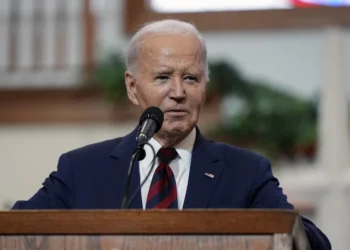Let’s go back to the America our ancestors grew up in; more specifically, the era after World War II. Many would argue the prospects for American prosperity for young men aspiring to be middle class was then at its peak, as a laborer could work his factory job yet potentially be able to afford a new car for his wife, a go-to-work car for himself, and a starter home as a place to start or grow a family in one of the quickly growing suburban areas around urban centers That economic boom begat a baby boom, with 1957 considered its peak year.
Yet those 68-year-olds whose parents lived the era of liking Ike saw us slip into a time when the factory jobs left, Rust Belt cities like Detroit hollowed out, and the close-in suburbs with their little tract houses were no longer as desirable. Suburbs spread outward in an ever-widening circle around urban areas, with some of them becoming urbanized nodes of their own. Meanwhile, the older housing stock in the inner cities was often torn down and redeveloped as subsidized apartment and rental units for those who were left behind when the economic bus pulled away, with monuments to urban renewal like Cabrini-Green in Chicago or Pruitt-Igoe in St. Louis becoming hotbeds of crime and hopelessness.
To make a long story short, one significant historical aspect of the recent American past has been that tried-and-true entry into the middle class: homeownership. Long-standing government policy has assisted and rewarded those who seek the golden ticket, offering reduced down payments and tax advantages that favor homeownership.
The issue, however, has become the surging cost of housing. A recent two-part series (part one and part two) by RealClearInvestigations considers the question of housing affordability on a global basis. Suffice it to say, it’s not just the one out of three Americans who are “housing poor,” spending more than 30% of income on their rent or mortgage, who are finding the desire for homeownership or moving up to a better place being pushed out of reach.
For those living in urban areas, one of the causes outlined by RCI is well-known: restrictive land-use regulations that drive up property prices. As authors Joel Kotkin and Wendell Cox put it:
For years the YIMBYs and NIMBYs have debated development in urban centers: While “Yes in My Back Yard” advocates seek to “build, build, build” ever more density in urban centers for environmental reasons, the “Not In My Back Yard” forces want to limit development often to preserve property values and the existing character of neighborhoods. Meanwhile, housing prices have continued to rise to often unsustainable levels from San Francisco to Seoul, putting the dream of home ownership out of reach for many who are forced to pay much of their salaries in rent. Both YIMBYs and NIMBYs rely on heavy-handed regulation and other policies that discourage and complicate home ownership.
One suggestion to address this, of course, is multi-family housing, but that flies in the face of Americans’ long-standing preference for single-family homes on detached lots. Environmentalists scream about those developments because they lead to sprawl, as houses encroach on once-pristine farmland. Yet aside from those who describe themselves as “GINKs” (green inclinations, no kids), the vast preference — even from a generation that’s been instilled with the “end is near from climate change” propaganda — of over three-quarters of respondents would be a single-family home in the suburbs as opposed to any other housing type.
Instead, there are several options to assist those who wish to invest in their future — some are common sense and others are more far-fetched.
Stating that he would “open up tracts of federal land for new home construction” during his campaign, President Donald Trump has proposed an idea that could benefit several cities surrounded by federal acreage, including Las Vegas, Phoenix, Salt Lake City, Albuquerque, and San Diego. The concept of “Freedom Cities” is another of Trump’s ideas. He claims, “These freedom cities will reopen the frontier, reignite American imagination, and give hundreds of thousands of young people and other people, all hardworking families, a new shot at home ownership and in fact, the American dream.” This could include the outright sale of federal land, as House Republicans have suggested, or leasing out land to avoid onerous state regulations that prevent the construction of affordable single-family housing.
And this housing demand can be assisted by both old and new technologies: manufactured homes are cheaper to build than traditional stick-built homes, but a new method of 3-D printing homes has the promise of shaving building time even further, from weeks to days, allowing for quicker development of supply to address demand. Along with revising land regulations to allow for higher housing density in single-family homes, it would be a good way to revive the starter home that helped build suburbia after World War II.
“Housing and home ownership transcend politics,” Kotkin and Cox conclude. “They are key to a healthy society — impacting everything from wealth accumulation to personal safety and happiness.” Millions of young Americans are looking for a way to start climbing the economic ladder but find the rungs pulled up thanks to onerous student loan debt, mass buyouts of housing stock by corporate investors seeking to rent them out, and the general idea that “you will own nothing and like it.” However, young Americans have the desire to own something like their parents and grandparents did, and if there’s a way to make that “dream” a reality, it will be a boon to us all.

















